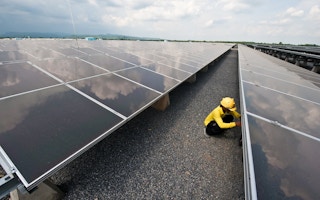Traditionally, the development of electricity systems has been built upon two assumptions: demand is not to be controlled; supply, then, must meet demand.
This principle of “load following” has never been the most economically sensible approach to operating power systems. Ensuring steady supply gets more complicated when electricity demand fluctuates—as it usually does throughout the day—as utility companies need to be ready to inject electricity into the grid during demand spikes. The problem is, this type of generation is generally more expensive than producing electricity continuously.
The general rule is, the higher the peak, the higher the cost. And peak demand is rising across Southeast Asia, increasing demand fluctuations. This requires more generation capacity, affecting electricity costs. Total energy demand is also skyrocketing as the region’s economies and cities grow.
The growth of the region’s electricity demand is one of the fastest in the world, with a rate of 6 per cent per year. The residential sector’s energy demand—which only tails that of the industrial sector—is forecast to rise along with incomes as people are able to afford to use more electrical appliances.
Things don’t get easier as the use of renewable energy becomes more prevalent. Variable renewable energy sources—such as wind and solar—are intermittent and can cause electricity supply to fluctuate. After all, the sun doesn’t always shine, and the wind doesn’t always blow.
To address such challenges, modern electricity systems will need to break the mould and embrace a more balanced supply-demand approach supported by digital technologies. Utility companies need to start thinking about smart demand-side management to modify consumer demand, not just to encourage lower energy use but also to flatten consumption peaks.
This can be done by playing with incentives and disincentives for electricity consumption. Countries can implement dynamic electricity pricing that offers pricing incentives when demand is low and electricity is available in abundance. In turn, higher tariffs could be implemented during peak hours to ensure that demand doesn’t strain supply.
But such energy demand management needs to be complemented by flexible and reliable electricity grids that harness digital technologies. Such smart grids allow for efficient data communication, enabling faster and flexible supply-demand management through real-time assessments and pricing.
As such, the digitalisation of energy systems is a key building block in enabling a balanced electricity market. Countries such as the United States, China, and European nations have made large investments to build such smart infrastructure. To be future-ready, Southeast Asia’s utilities will need to follow suit.
How does it work?
On the demand side, digitalisation enables extensive monitoring and management. This helps identify inefficiencies in the system early. The data collected also provides a strong foundation for the introduction of evidence-based energy efficiency policies.
Furthermore, the utilization of artificial intelligence and machine learning can accurately predict energy consumption patterns using historical data. Forecasting energy is inherently tough, especially when data is limited. A proper data record coupled with advanced big data analysis systems could overcome such barriers.
Predicting future energy demand is crucial to enable better resource allocation, faster return on investment, and decreased risk for private investors. Using such forecasts, energy producers can align their production load with demand even as the latter is managed, saving production costs and reducing electricity tariffs. This means that smart energy systems would benefit both energy consumers and producers.
Yet implementing such smart systems may prove challenging due to high upfront costs, especially for the residential sector. Pilots could at first target new buildings, which can be followed by incentives for building retrofits to ramp up energy efficiency. Despite financial hurdles, it has been shown that investments in smart infrastructure pay off. In Europe, for instance, household energy efficiency measures have managed to cut energy use by up to 6 per cent.
A critical catalyst for renewable energy deployment and energy efficiency progress, digitalisation is one of the cornerstones of the energy transition. It enables key features of modern energy systems, such as virtual power plants, renewable energy certificates, renewable energy resources forecasting, and demand response control.
As Southeast Asian nations embark on their energy transition journey, there is huge potential for smart energy system development across the region. However, supportive policy and financial measures are needed to foster the growth of digital technologies and their energy applications. The role of government is crucial to design incentives, create a conducive environment, improve infrastructure, and promote pilot projects.
Dr Zulfikar Yurnaidi is a senior officer at the renewable energy and energy efficiency (REE) department at the Asean Centre for Energy, an energy think tank based in Jakarta.
Diana Vitonia is an intern at the renewable energy and energy efficiency (REE) department at the Asean Centre for Energy.












